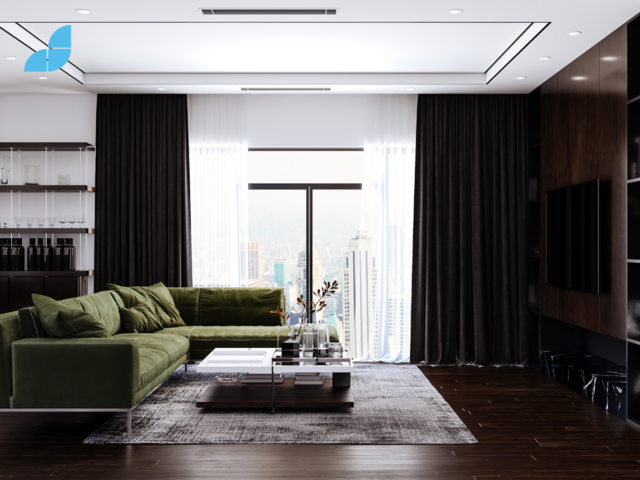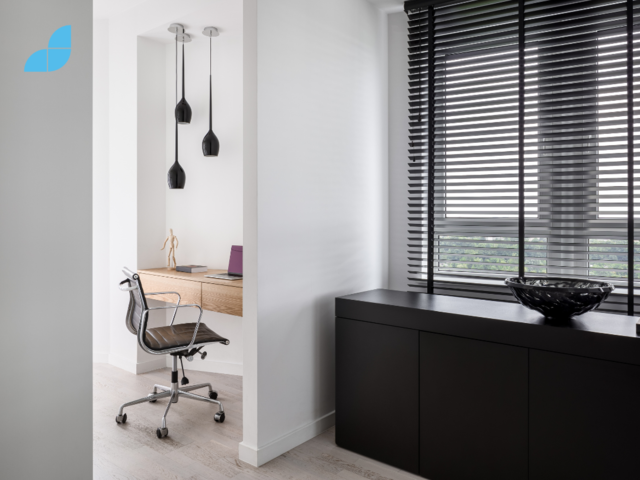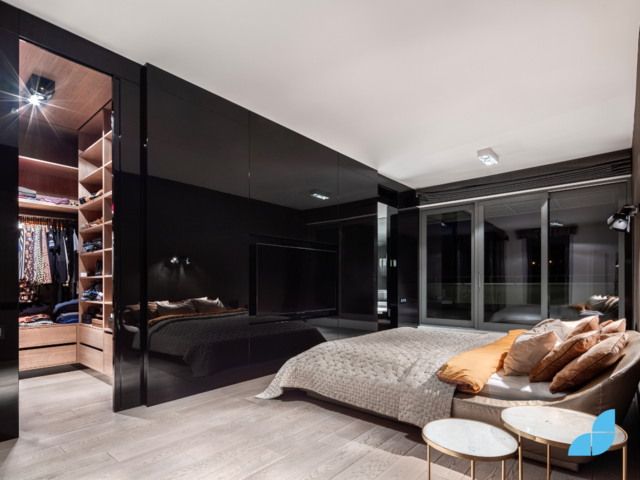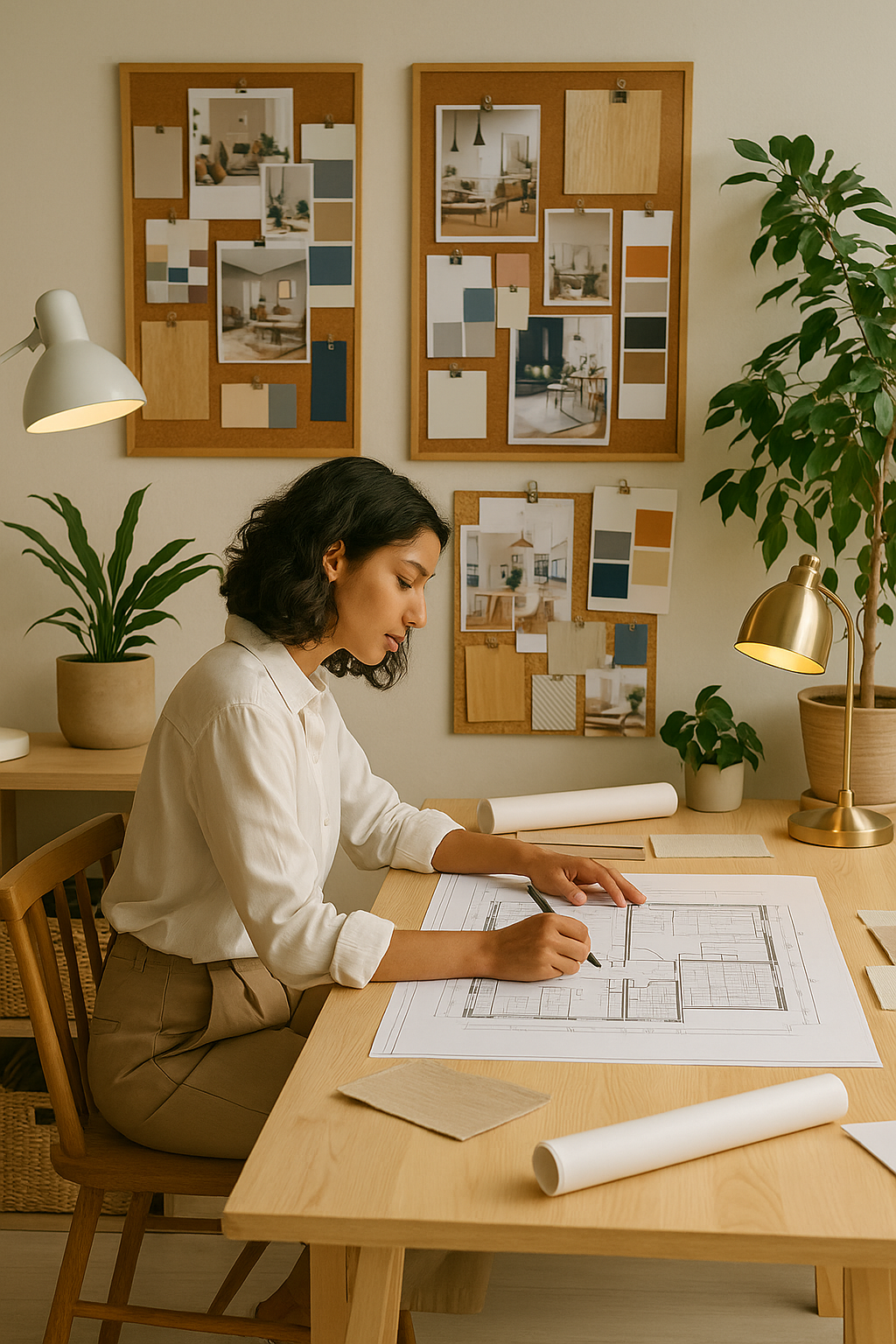Combining different interior design styles is a tricky endeavour. It takes a keen eye, a sense of proportion, and the courage to deviate from traditional design norms. However, when done well, it can result in a one-of-a-kind, colourful, and oftentimes intriguing design. This article will walk you through the process of mixing numerous styles and patterns to produce a single, coherent design.

Understanding the fundamentals
Before you start mixing styles and patterns, it's helpful to become familiar with some basic design concepts that will guide you through the process.
- Balance: This idea refers to a design's visual equilibrium. Balance can be symmetrical (where elements are placed as a mirror image of each other), asymmetrical (elements are arranged in an unequal manner), or radial (elements radiate from a centre point).
- Contrast: A striking aesthetic can be achieved by using contrasting colours, textures, forms, and sizes.
- Unity: Unity is achieved when all components of a design complement and operate together. It brings about a sense of harmony and cohesion.
- Rhythm: Rhythm is created with repetition of patterns, colours or elements. The goal is to generate a feeling of movement and flow.
Examining various styles
Understanding the details of different interior styles is the first step to effectively combining them. Let's look at some popular styles in more detail.
- Modern design values simplicity, clean lines, and minimal clutter. It is generally a neutral colour palette and consists of steel, glass, and metal.
- Traditional design is distinguished by opulent furnishings, old style elements and accessories. It is steeped in European sensibilities and features characteristics such as rich deep colour palettes, beautiful woodwork, and sophisticated furnishings.
- Rustic is inspired by nature. It focuses on rugged, natural beauty and utilises raw, often unfinished components such as wood and stone.
- Industrial design reflects an urban landscape and incorporates exposed steel, distressed wooden accents, and masonry.
- Minimalist is distinguished by its simplicity. It is recognisable by its use of space, clean lines and a limited colour palette.
Using a variety of styles
Here's how you mix design styles to create a space that seems balanced, harmonious, and distinctly yours.
- Begin with a base style: A base style serves as a stable foundation upon which to develop the rest of your design. This should be the style that you most identify with and the majority of elements should reflect this style.
- Select a complementary secondary style: Once you've identified your primary style, look for a secondary style that complements it. The secondary style should provide contrast while also sharing some features in common with the base style, such as colour, texture, or form.
- Distribute styles carefully: distribute pieces of the secondary style throughout all areas of the space to achieve balance and harmony.
- Use transitional pieces: These are pieces that include parts of both styles and can bridge the gap between them, ensuring a seamless aesthetic transition.
Using a variety of patterns
Mixing patterns can be difficult but when done well, it gives depth and character to a room. Here are some pointers on how to blend patterns efficiently.
- Use a mixture of large, medium, and small-scale patterns: Too many large-scale patterns can overpower the area, whilst too many small-scale patterns can make it appear cluttered.
- Use a consistent colour palette: Even though the patterns are dissimilar, a consistent colour palette will help to tie them together.
- Use solids to create balance: Solid colours can give visual breaks to patterns which will generate balance and avoid a feeling of a potentially overwhelming use of pattern.
- Limit the number of patterns: A handy rule of thumb is to limit the number of patterns in a room to three.
- Combine different types of designs: For a fun contrast, match geometric designs with organic patterns for example.
- Maintain a neutral background: If you're combining numerous bold patterns, a neutral background can keep the area from becoming overbearing.
- Combining different ethnic patterns from around the world: This can result in a rich, layered effect. Consider a Kilim rug coupled with Asian-inspired flower cushions.

Tips for combining styles and patterns
- Use mood boards: Mood boards allow you to see how different styles and patterns interact with one another.
- Start small: If you're new to blending styles or patterns, begin with accessories and then progress to larger furniture pieces.
- Follow the 60-30-10 rule: According to this rule, 60% of the space should be the primary style or pattern, 30% secondary style or pattern, and 10% accent.
- Be patient: Finding the right combination of styles and patterns can take some time. Don't rush through the process.
- Mixing multiple styles and patterns successfully is an art form. It takes practice and a good understanding of design ideas. But the effort is worthwhile. The end effect is a one-of-a-kind, dynamic design that expresses your personality and aesthetic sensibility.
Are you interested in learning more about interior design? Our academy provides a variety of courses for everyone from hobbyists to professionals. These courses teach you how to successfully mix styles and patterns, among other things. Begin your design journey with us today and create spaces that are as unique as you are!


